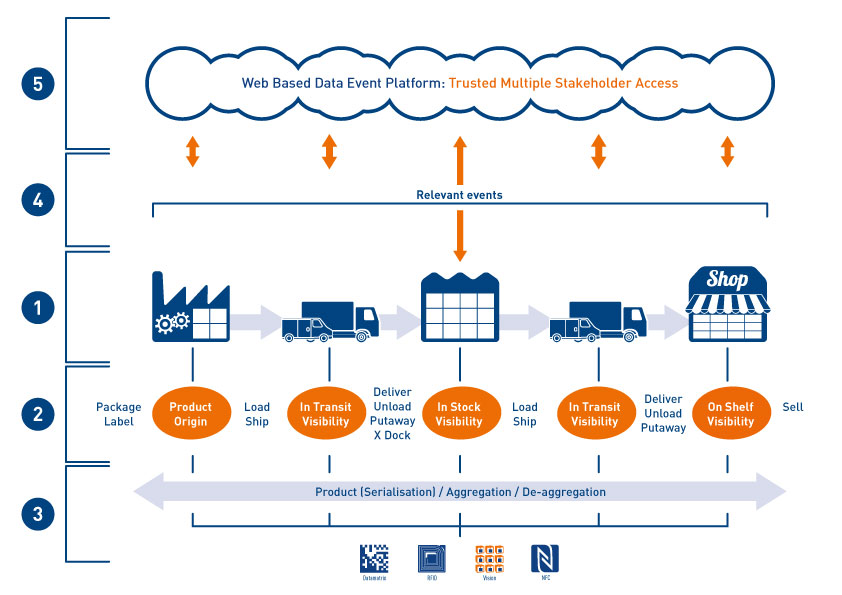Whereas most supply chain directors recognise the importance of having end-to-end supply chain visibility, many fear its implementation might be costly, time consuming and require serious re-engineering of existing systems and processes. It does not have to be that way. Not if you can adhere to the following 5 key steps:
1. Leverage the existing
A powerful end-to-end supply chain visibility solution should not be a standard set-up to which your processes and infrastructure should adapt. It should start from your existing business processes and infrastructure, optimising and adapting them in view of maximum output with minimal impact on the existing.
2. Process execution is key
Efficient process execution is the driver for supply chain visibility. It’s a bottom-up process: the better your supply chain execution processes are optimised, the better data can be captured and shared, and the more value your visibility can create.
3. Use the right technology
To optimise your process execution, you need to be sure you are using the best-fit technology for your environment and process. Example: If you need to receive a pallet once a day, using an RFID infrastructure to capture data might not be the most cost-efficient solution but if you need to receive hundreds of pallets containing items in that case it will be interesting.
4. Capture relevant data only
You need to be able to simplify. Alerts should be based on crucial information only (IDs, logical links or business events), captured at different key stages of the supply chain, so you can focus on what requires attention to ensure operational continuity.
5. Easy Integration and sharing of relevant info and alerts with stakeholders
If you have different operational software systems which do not interact, you need an intuitive data sharing platform that can tie them together, interfacing in a standard and straightforward way. It is also possible to collect data from across your supply chain via deploying easy to use and easy to integrate web-based services enabling relevant information to be shared in a structured way with chosen stakeholders. Alerts pertaining to potential disruptive events in the supply chain can be automatically pushed in a workflow to the correct actors, to quickly and efficiently solve related issues.
